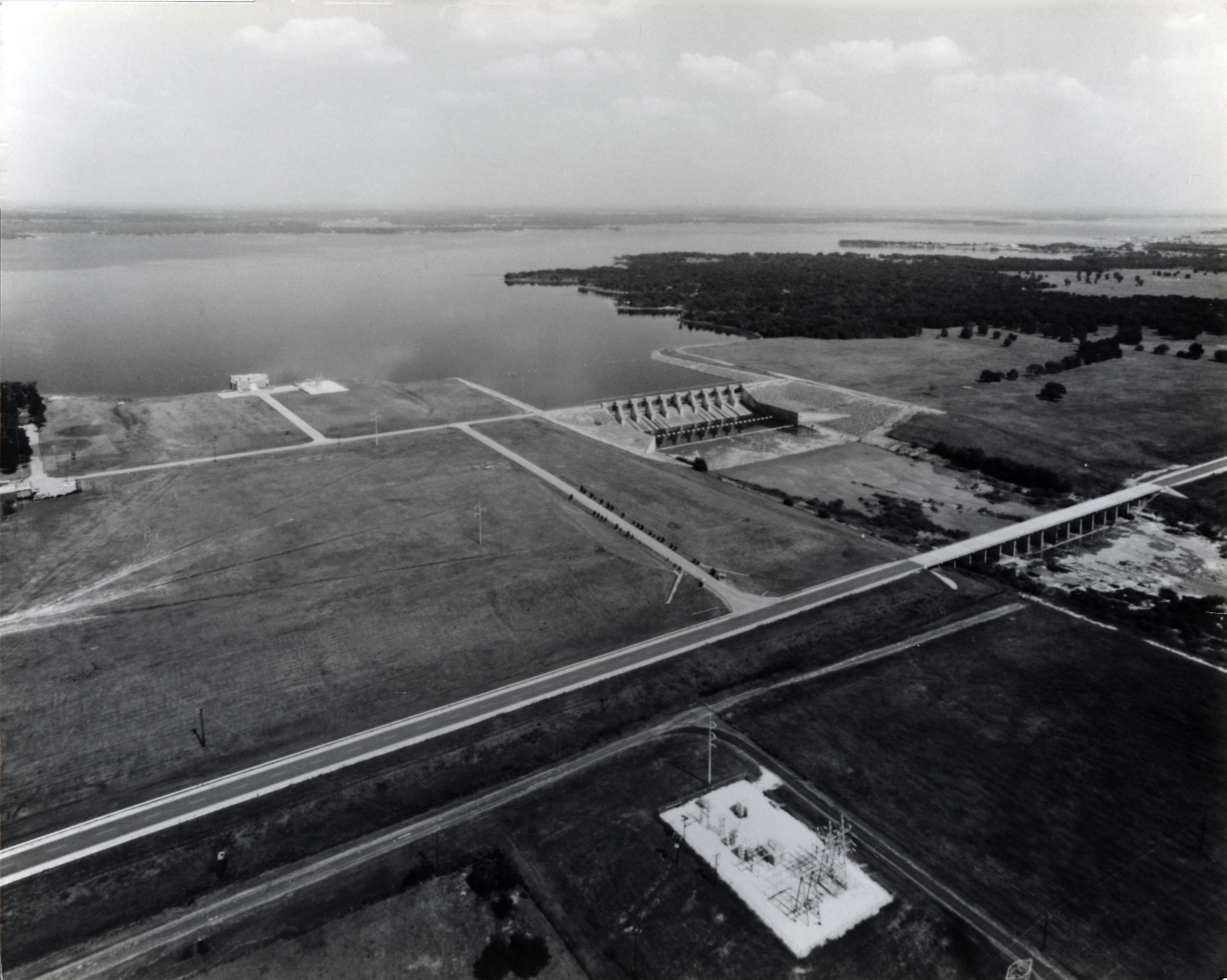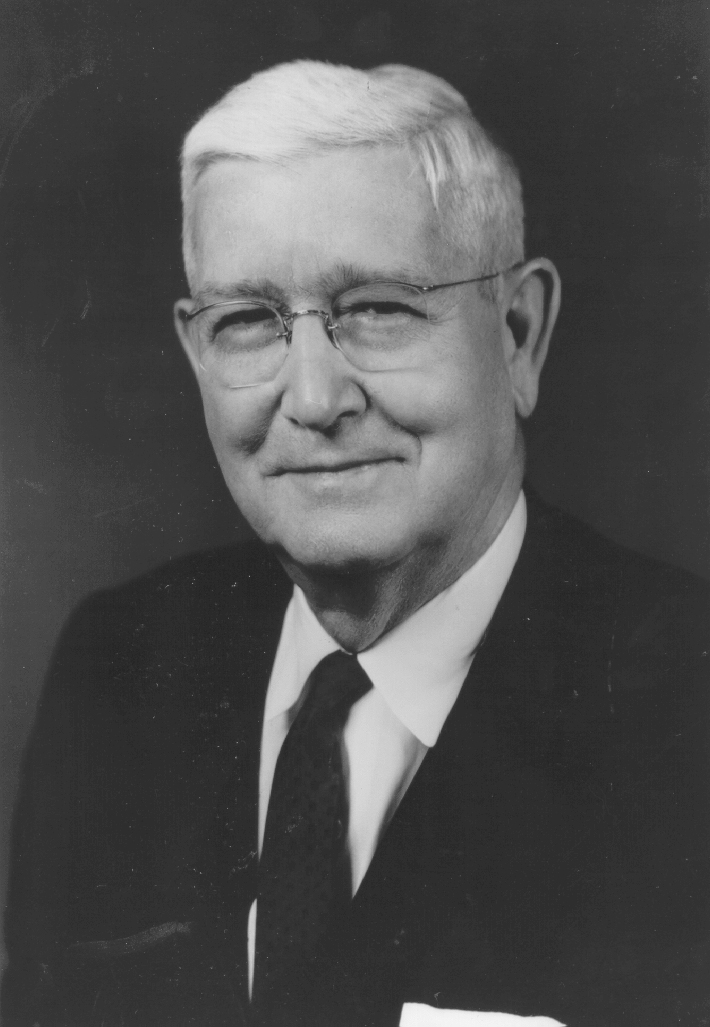The 1960s: Making Lakes and Becoming Environmental
As we celebrate our 130th anniversary, this series chronicles Freese and Nichols’ achievements decade by decade. These posts are based on A Century in the Works, written by Deborah Sizemore and covering 1894 to 1994, and Continuing the Journey, covering 1995 to 2015.

Freese and Nichols worked to help Texas’ river authorities fulfill their mission to control, store, preserve and distribute water during the 1960s. More than a dozen reservoirs were built under the firm’s supervision, from relatively modest lakes on the dry Texas plains to giant reservoirs in east and southeast Texas.
Fighting Water Famine
The largest lake engineered by Freese and Nichols in the 1960s was in answer to the 1950s drought. Fort Worth had flirted with water famine during the 1950-56 dry spell. When the drought broke in the spring of 1957, Fort Worth had only enough water for eight months of use.
The drought heightened city leaders’ awareness of the limited yield of the upper Trinity River. In 1954, the City of Fort Worth engaged Freese and Nichols to conduct a two-year study of additional water sources. Of all the possibilities, the outstanding prospect was bringing water to Fort Worth from East Texas. In 1956, Freese and Nichols developed a long-term plan proposing projects through the 1980s; the first was to construct a reservoir on Cedar Creek, about 80 miles southeast of Fort Worth.
Cedar Creek Reservoir was completed in 1965 for $19.5 million and yielded 156 million gallons of water daily. The design engineer for its dam was Freese and Nichols associate W. Leary Eeds, a nationally recognized civil engineer who pioneered the development of the gated morning glory spillway in large dams. During his career with Freese and Nichols, Eeds designed and supervised the construction of more than 100 dams and reservoirs. He would die of a heart attack in 1971 at age 58.
Other Freese and Nichols reservoir projects in the 1960s include Lake E.V. Spence in West Texas for the Colorado River Municipal Water District, and Lake Conroe, north of Houston, a joint project of the San Jacinto River Authority, the City of Houston and the Texas Water Development Board.
Engineers Become Environmental
The 1960s brought a redefining of engineering practice and the engineer’s mission. The term “environmental engineering” entered the professional vocabulary and became the subject of many papers and conferences. In a broader sense, the term was synonymous with civil engineering because it had always been the civil engineer’s job to control or improve the human environment.
Freese and Nichols did not find the transition to environmental engineering difficult. Pollution abatement, public well-being and wise resource use had been prime concerns of the firm since its founding.
In 1960, Democratic presidential candidate John F. Kennedy appointed Marvin Nichols to his Natural Resources Advisory Committee. “I am particularly glad to have Marvin Nichols on this Committee, because of his special interest in water resources and particularly hydro-electric power development,” Senator Kennedy said. In discussions with JFK’s chief resources advisors, Nichols focused on the water resources and power problems of Texas and the Southwest.
Hawley Memorial Fund
Twenty years after Major John B. Hawley died, Simon Freese and Marvin Nichols honored the memory of the firm’s founder by establishing the John B. Hawley Memorial Fund of the Texas Section, American Society of Civil Engineers. Income from the initial fund and future contributions would be used to make annual awards for excellence in civil engineering practice. Texas ASCE still awards the annual Hawley Fellowship to this day.

Marvin Nichols: A Friend, A Role Model, A Civil Engineer
People were Marvin Nichols’ hobby, people from all stations of society. He invested much of his time in building and maintaining friendships, and he seldom forgot a birthday or anniversary.
Nichols was also a great role model for not only his younger professional colleagues but also the youth. He served 42 years at the Fort Worth Panther Boys’ Club, where he made substantial contributions to the club’s building and memorial funds so the club could improve and expand its service to underprivileged youths.
In 1964, Nichols received the highest honor given by the Texas Section of ASCE, the “Award of Honor” for outstanding service to his profession. He was the fourteenth Texas engineer to be recognized in the Section’s fifty-year history. He accumulated many more awards, honors and distinguishable dedications from various professional organizations.
At 72, Nichols remained an active, enthusiastic and esteemed colleague. He would later be hospitalized, on his way to a meeting, and diagnosed with cancer. He continued to work from his hospital bed. Weeks later, Nichols passed away on April 10, 1969. People and publications throughout Texas, the Southwest and even internationally, paid their respects.
Among his many accomplishments, what Marvin Nichols will be best remembered for is his influence on developing water supplies to meet Texas’ present and future water needs. As the Fort Worth Star-Telegram wrote, “His death is a reminder to Fort Worth and Texas that they owe him a great deal for their comfort and prosperity now and in the years ahead.”
A version of this article was originally published Aug. 7, 2019.

